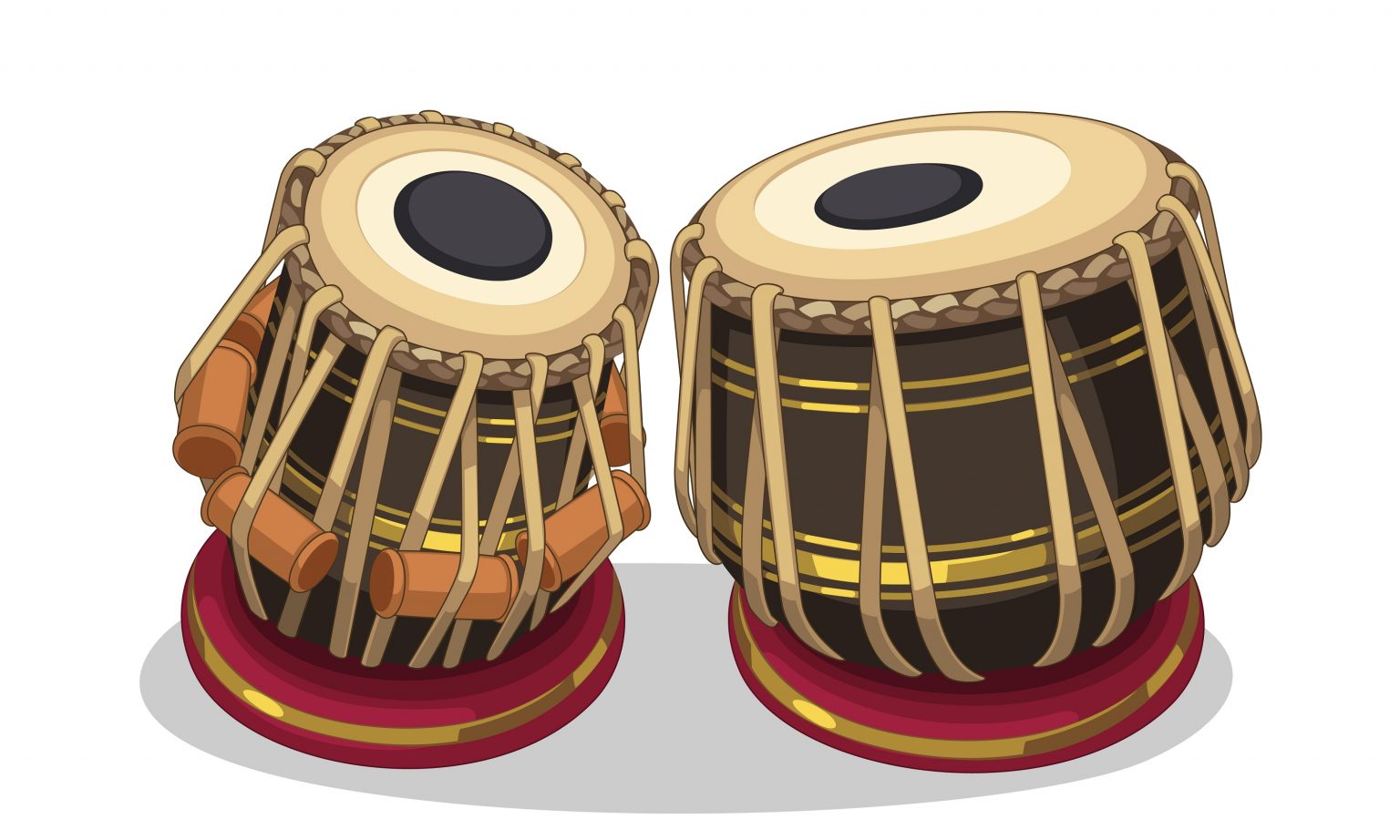
Music is the art of sound, represented in the form of cultural activity. It is a creative expression of ideas and emotions through sound. The common elements of music are the rhythm, pitch, dynamics, and sonic qualities of texture and timbre.
Music is a worldwide phenomenon and is a part of every country and every culture. Music in India is an integral part of socio-religious life. It includes multiple varieties: folk music, classical music, Indian pop, Indian rock, and Bollywood music. These forms of music are classified into two types: Hindustani music and Carnatic music.
Hindustani Music: This style of music is popular in North India. It is considered that Hindustani Music originated from the Delhi Sultanate. Amir Khusrow (1233-1325 AD), a composer in Turkish, Persian, Arabic, and BrajBhasha is known to have systematized some aspects of Hindustani music. He is also credited withintroducing several ragas such as Zeelaf, YamanKalyan, and Sarpada. He fused Persian melody and beats on a Dhrupad like structure to create the Qawwali genre. The Persian elements made the music popular in medieval India, and thus Hindustani music emerged. Dhrupad was created by Swami Haridas and is considered as the oldest creation of Hindustani music. Over time Thumri, Khyal, Thappa Tirana, etc. emerged to offer distinct styles of Hindustani music.
Carnatic Music: This style of music is popular in South Indian states of Telangana, Karnataka, Andhra Pradesh, and Tamil Nadu. The founder of the Carnatic music is Purandar Das. Later,ShyamaShastri, MuthuswamiDikshitar, and Tyagaraja developed this style of music. Aptly called the ‘triratnas of Carnatic music,’ their period starts from 1700 to 1850 AD. Another three exponents – KshetraRajan, Swati Tirunal, and SubramaniyaBharathi joined to develop the Carnatic music. All these seven are considered as great exponents of
Carnatic music. Difference Between the Hindustani
and Carnatic Music
| Hindustani Music |
Carnatic Music |
| Hindustani music was originated much earlier than Carnatic music. It has emerged as a distinct form of music due to Islamic and Persian influences. This style of music is synthesized with Islamic traditions, Vedic chants, and Persian Musiqu-e-Assil. |
Carnatic is a purer form of music that was evolved from ancient Hindu traditions. It was developed during the Bhakti movement in the 15th to16th century. This style of music got a boost during the 19th to 20th century. |
| The main instruments used are Sarangi, Tabla, Santoor, and Sitar. Pitch-based western instruments like guitar, keyboard, flute, etc., can be used because the number of musical notes and intervals is equal. |
The main instruments used are Mridangam, Veena, and Mandolin. Only specificpitch-based instruments such as Veena, Morsing, Nadaswaram, etc., can be used because only microtonal notes haveto be used. |
| It is raga-based. There are 6 major ragas. The ragas have gender influence. |
It is Kriti-based. There are 72 sampoorna ragas, The ragas are free and have a typical style. The sound intensity can be controlled. |
| The core of Hindustani Music is the Swara(Pitch). |
The core of Carnatic Music is Laya(Rhythm). |
| This music style has several sub-styles. |
It has only one particular prescribed style of singing. |
| It has 12 intervals of swaras (musical notes) within asaptak (an octave). |
It has 22 intervals of musical notes (swaras) within an octave (Saptak). |
| Raga essays (alapanas) are elaborated from note to note. |
Raga essays (alapanas) are elaborated from phrase to phrase. |
| It has a different shailey. |
It has styles such as that of G.N.Balasubramaniam, Madurai Mani Iyer, and many more. |
| It stresses on pure notes. |
It stresses on gamaka-based Carnatic ragas. |
| The main vocal forms are khayal, Dhrupad, Thumri, Tarana,Dadra and Gazals. |
It has several varieties of improvisation, including Niraval, Alpana,Ragam Thana pallavi and kalpanaswaram. |
| The concept of upapakkavadyam does not exist. |
The concept of upapakkavadyam exists. |
| It requires vocal-centric groups. It has a separate repertoire for vocal and instrumental. Various instruments are designed to accompany the singer. The emphasis is on Nadi and Samvadiswaras (the moral construction of the song). |
Until recently, Carnatic instrumentalists played the same Kriti-based compositions as the vocalists did. The emphasis is on vocal music and most compositions are sung in the gayaki style. |
| Full swars are considered to be complete, followed by distorted swars. |
The distorted swars are named according to the shrutis. They started afterwards. |
| The singer recites the 'Joda,' the clap at a fast pace. It is not accompanied by Taal afterward. |
The singer recites the 'aalap' and 'taanam.' |
| The sarangi is its major accompaniment. |
The violin is its major accompaniment. |
| There are different ragas for morning and evening and time limits are followed. |
Well-defined time durations. Madhya is twice of 'Vilamba' and the 'Dhruta' is twice of Madhya. |
| Vocal singing is trained and practiced based on the Sargam. |
Gamakas (also known as Gamak or Gamakam) train and practice vocals. |
| 'Tilawal' is the thaat of pure swars. |
'Mukhari' is the thaat of pure swars. |
Similarities Between Carnatic and
Hindustani Music
- Both styles of music are greatly associated with religion. While Hindustani music originated in the Vedic period, Carnatic music originated during the Bhakti movement.
- Both use Sampoorna Scale to describe JanakThaat or Raga to make Janya Raga.
- Every raga in both styles of music has one leading swara or Vadiswara
- Both use a Drone or Tanpura with one or two notes to indicate pitch and base in the Raga version.
- The central notions in both styles of music is that of a melodic mode or raga, signifying a rhythmic cycle or tala.
- Both evolved Sanskrit language scripts and through Vedic traditions.
Acharyanet is conducting a virtual global Carnatic camp where students of all levels get to learn music online from the legends of Carnatic music.
Register today! 
